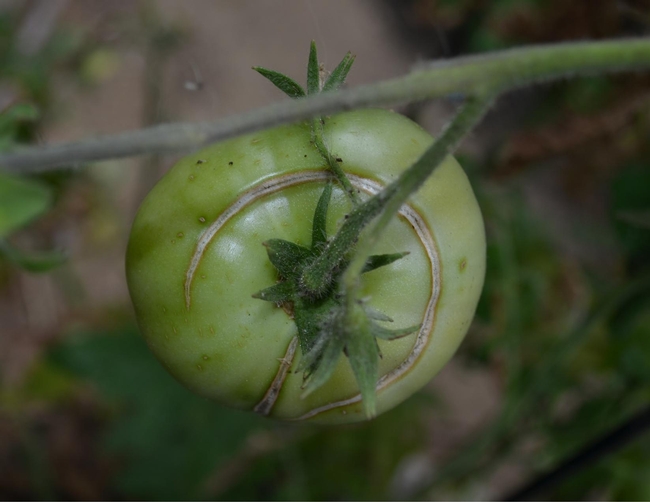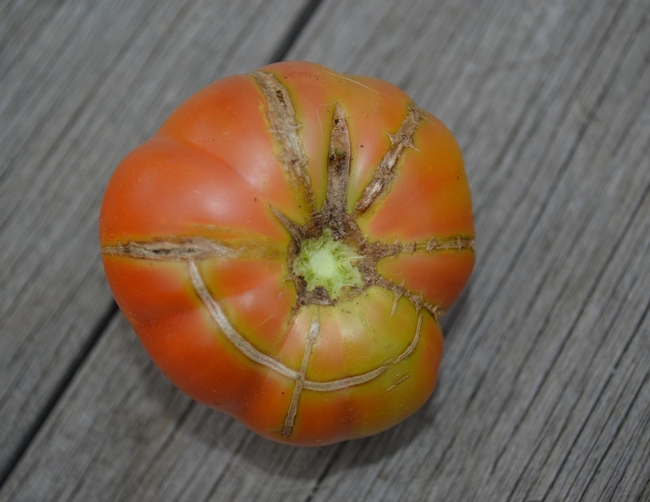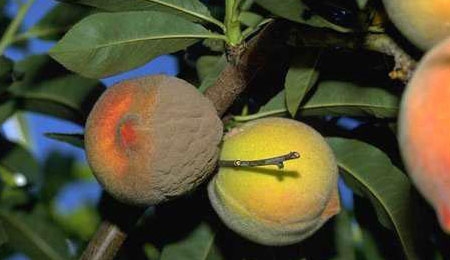Posts Tagged: rot
Please, No Flags in My Alfalfa on the 4th of July!
It’s not that I am unpatriotic, but in this context “flags” refer to isolated dead alfalfa stems with dead leaves still...
Too Much Water…. Bad News for Roots
Many of us think about too much water killing alfalfa during the hot days of summer. And this does happen, especially at the tail end of fields...
All Cracked Up!
For the past several years, I’ve had problems successfully growing tomatoes bigger than cherry tomatoes. This year was no exception. Whether it was the cool weather or the increasing shade in my maturing yard, my tomatoes would grow and maybe set fruit but the fruit simply wouldn’t ripen. But finally, in September, one variety—Mr. Stripey—showed some promise by turning color. The few I tasted were delicious. Success at last! But then I noticed that each tomato, without fail, had concentric cracks around each stem. Well, this was a disappointing turn of events that I hadn’t seen before.
After a little research, I learned that these cracks, also known as “growth cracks,” are associated with the tomato’s growing conditions. Concentric cracks circle the top of the tomato around the stem while radial cracks extend in a straight line down the side of the tomato from the stem. Both types of cracks are caused when a plant receives too much water after a dry spell, either through excessive watering or after a rainy period. In essence, the plant receives too much water too fast, causing the interior of the tomato to expand too fast for its skin to stretch enough. The skin then cracks to relieve the pressure.
My plants are watered regularly by timed drip irrigation, so I was a little surprised to learn that this system could result in excessive watering (if anything, I’ve been fairly sure that they get under-watered.) But then I learned that some beefsteak-type varieties, like my Mr. Stripey, are prone to cracking. Perhaps that explains it!
Cracked tomatoes are still edible, but are prone to rot or disease setting in quickly. The cracked portion can simply be cut away. In my case, once the cracking appeared, I never was able to beat the rot before picking the tomato.
What can I do to avoid this problem next year? First, try a crack-resistant variety with more elastic skin (e.g., Early Girl, Jet star, Mountain Spring or Mountain Fresh). Second, mulch plants once they are established to help retain soil moisture. Third, pay closer attention to my plants’ irrigation needs, particularly after a hot spell. Although, given my luck with tomatoes lately, I may rethink my summer vegetable garden entirely!

Cracked green tomato, 'Mr. Stripey'. (photos by Erin Mahaney)

Cracked red 'Mr. Stripey'.
Yuba/Sutter peach farmer dismayed by 'dirty crop'
UC Cooperative Extension farm advisor Janine Hasey told a Willows Journal reporter she is amazed that the peach harvest in Yuba and Sutter counties has begun. Cool spring temperatures mean harvest is expected to be late.
"All we are looking at right now is the extra early," Hasey was quoted in a story published late last week. "As time goes on, we will see what happens with other varieties."
Cooperative Extension recommends pre-harvest fungicide sprays for all varieties to prevent ripe fruit rot.
"Put your first treatment on two to three weeks before harvest," Hasey said.
The article focused on Sutter County farmer Sarb Thiara who is disappointed by brown rot in his peach crop.
"I've never seen it like this," he said. "We call it a dirty crop."
Thiara, a director with the California Canning Peach Association, has farmed peaches for 35 years, but in the last five years he has pulled out 600 acres and replaced them with almonds, walnuts and prunes. He has about 500 acres of peaches left and plans to gradually replace those, too.
"It's very frustrating, the cost of labor, the cost of chemicals, to even get this," Thiara said, according to the article.

Brown rot, seen at left, is a concern for peach growers this year.

